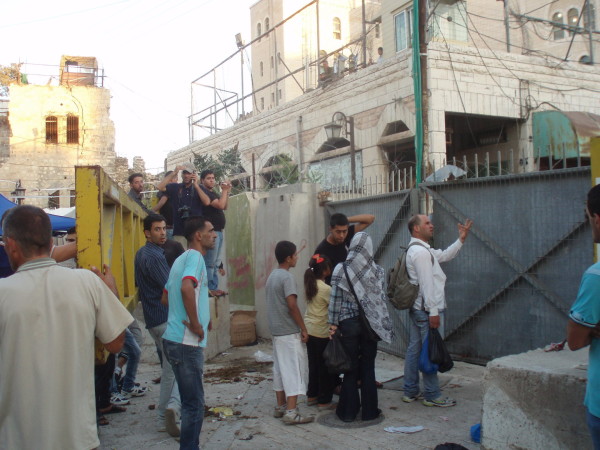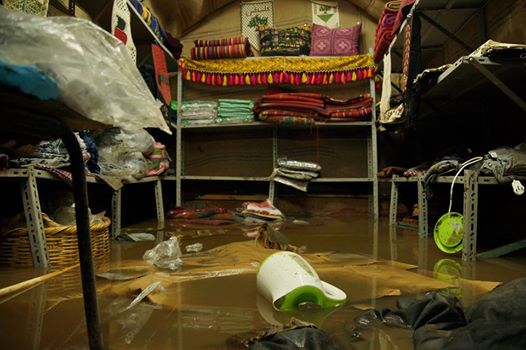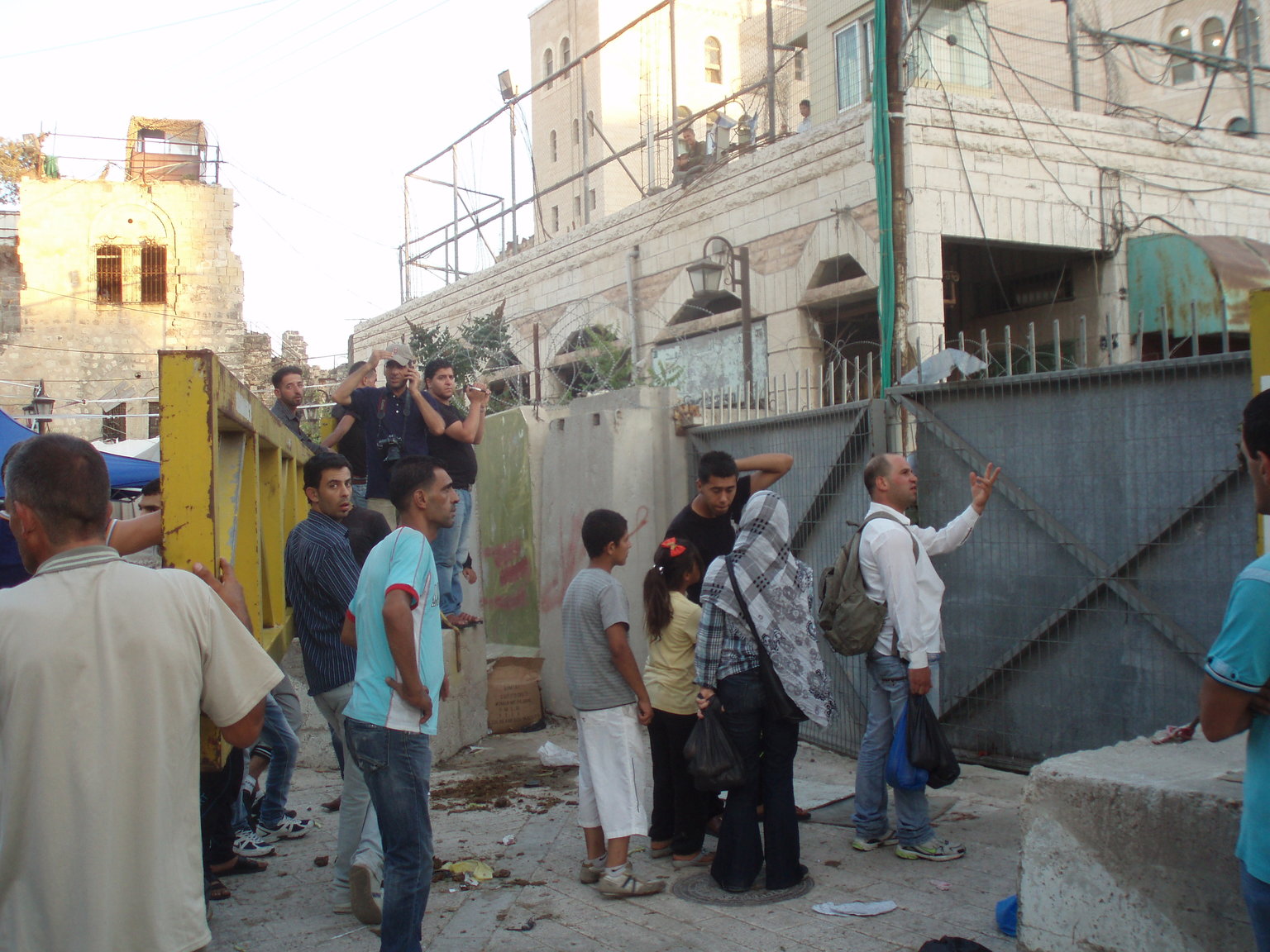21st August 2014 | Saeeda Al-Rashid | Occupied Palestine
It’s late May [2013], and the air is stifling. Heat sizzles from the pavement, and Khalili youth, though well-adapted to these conditions, can be seen wiping sweat from their brows as they trek home from school. A few trickle through Checkpoint 56 into the Tel Rumeida neighborhood, formally designated Israeli-controlled territory under the Hebron Agreement. Soldiers search their bags and detain one, but finding no reason to arrest him, release him an hour later, a routine form of harassment youth are all too accustomed to. At some point, a school-bus turns up the road. It’s labeled in Hebrew and English, “Air-Conditioned Video.” The school bus is only for settler children, whereas many Palestinian vehicles are not allowed to drive in Tel Rumeida.
The word “apartheid” is often used to criticize Israeli racism and the Israeli state’s policies of segregation. But on the street level, what does apartheid actually look like? While living in occupied Khalil under Israeli military occupation for a few months, I experienced only the beginning of the answer to those questions. The rest is in the lived experience of businessmen and women, school children, farmers and shepherds who have lived under occupation for forty-plus years.
Apartheid Defined
In his final report as UN Special Rapporteur on Human Rights in the oPt [Occupied Palestinian Territories], Richard Falk called for an investigation into the Israeli practices, broadly referred to as hafrada meaning “separation”, that could constitute apartheid under the International Convention on the Suppression and Punishment of the Crime of Apartheid. Offenses that come in conflict with the Convention include the unlawful taking of life, administrative detention, and torture, and also the segregation of land and parallel legal systems in the West Bank that “prevent participation in the political, social, economic and cultural life of the country and the full development of a racial group” (18).
This invokes a flood of memories from my short time in Palestine, including a young couple in Masafer Yatta living in a former sheep pen because the Israeli Civil Authority won’t grant them a permit to build a house; shops forced to close down during Jewish holidays so that settlers can illegally pass into the Palestinian-controlled part of Khalil; a B’tselem caseworker laughing aloud when we asked whether any action would be taken after Abu Shamsiya documented Israeli settlers’ assault on his family and was himself arrested on false charges of spitting at the nearby soldiers throwing stones and a tomato, whilst at the same time an Israeli boy of similar age threw eggs at internationals and went unpunished.

Apartheid, as Falk points out, is not a recurrence of isolated crimes; rather, “the combined effect of the measures designed to ensure security for Israeli citizens, to facilitate and expand settlements, and, it would appear, to annex land, is hafrada, discrimination and systematic oppression of, and domination over, the Palestinian people.” Apartheid is in the rain that flooded the Khalil Souq (market), ruining goods that provide needed income for Khalili families, because Israeli authorities have prevented the construction of appropriate drainage facilities.

Apartheid is in the rocky, rat-infested paths Palestinians travel on to climb the prayer road because the main roads are only for settlers. Apartheid is in the children who inhale tear gas nearly every day on the way to school, and every family stuck in the Qalandiya checkpoint during Ramadhan, barred from entering Jerusalem to worship. Apartheid is the reason ISM volunteers on the ground believe strongly in only taking actions led by Palestinians – this is their home, and their lives are impacted every day by apartheid years after we’ve flown home to our respective countries.
Resistance and Tear Gas
Richard Falk’s final report also pointed out that persecution of those who resist apartheid practices falls under article 2(f) of the Convention. Upon investigating the types of tear gas deployed by the IDF against peaceful protestors, from an organic chemistry perspective with the help of a leading chemist who was my professor, I unearthed a plethora of information on this vile substance.
The IDF principally uses CS gas (o-chlorobenzilidenemalononitrile). Exposure to CS gas has been implicated in a number of deaths in the West Bank as well as South Korea because it’s a potent Michael acceptor, making it able to inhibit many important chemicals in our bodies including the amino acid cysteine, which can be found on the TRPA1 protein channel that mediates our continued responsiveness to a wide variety of irritants and has been implicated in the prolonged sense of irritation experienced by some who are exposed to tear gas. (This is potentially the reason biting into an onion, a popular on-the-ground treatment for tear gas exposure, also counteracts the toxicity of CS gas – the inert sulfur-containing compounds in onions serve as alternate Michael donors).
Additionally, CS and CN gas produce methylene chloride, which as a nervous depressant and mild carcinogen reaches dangerous levels at exposure above 250 ppm by the constant barrage of intense tear gas deployment I witnessed at demonstrations. Finally, CS gas has been shown to be a mild mutagen (via intercalation with DNA) and thus it is also a potential carcinogen. Much has been said about the disparity in living conditions that results from the Israeli military occupation; prolonged exposure to dangerous chemicals for not only activists who resist the wall but shop-keepers and schoolchildren intertwines with the many different ways the system of apartheid and physical and legal segregation impact the daily lives of Palestinian people.
I believe this apartheid in and of itself is violence; there is no state of peace from which the more obvious forms of violence such as stone-throwing and shootings arise. There will only be peace when real justice is served – when apartheid is nothing more than a history lesson for our children.

